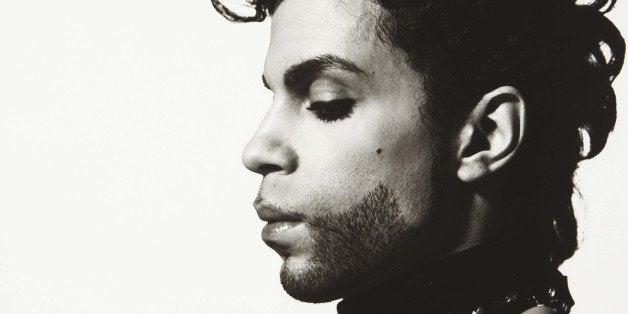
Prince was one of the most important artists in American popular music during the last two decades of the twentieth century. A Minnesota native, Prince Rogers Nelson rose to fame in the 1980s, scoring top albums with 1999 (1982), Purple Rain (1984), and Around the World in a Day (1985) and with the cult-classic film, Purple Rain (1984). He was often compared to Michael Jackson during the 1980s, as both enjoyed enormous commercial success. Prince was a multi-talented and prolific artist, at times writing far more music than he released and often playing all or most instruments on recordings. As a performer, he challenged the limits of sexuality, in many ways paralleling Madonna's musical exploration of suggestive behaviors and taboo topics during the 1980s. He will be remembered as one of most significant artists in American popular music history.
Prince performs "Lets Go Crazy" at the Superbowl in 2007.
Future generations will likely consider Prince primarily in the company of many of the other artists of his heyday in the 1980s. He was born in 1958, making him very close in age to Michael Jackson (1958-2009), Madonna (b. 1958), Sheila E (b. 1957) and Minneapolis associates Morris Day (b. 1957), Jimmy Jam (b. 1959), and Terry Lewis (b. 1956). While Prince and MJ were rivals in the 1980s, Prince's former bandmates Jam and Lewis went on to produce Jackson's younger sister Janet, beginning with her Control album of 1986. It sometimes seemed like a small world at the top of the charts.
Prince's musical roots were in both the funk and r&b of Sly Stone, George Clinton, and Earth, Wind, and Fire, as well as in the guitar-driven classic rock of Jimi Hendrix and Boston. Add a healthy mix of dance music and a strong knack for a pop melodic hook, and the result was a distinctive and wide-ranging style that had tremendous appeal. And at the dawn of the video age and MTV, the way you looked mattered. Prince drew from sources as diverse as Little Richard, George Clinton, David Bowie, Jim Morrison, and Jimi Hendrix to create a stage and onscreen presentation that was often provocative, always flamboyant, and occasionally scandalous.
Morris Day and The Time perform "Jungle Love" in Purple Rain (1984).
Prince 's music extends far beyond what was released under his own name (or symbol), including songs written for others such as the Bangles' 1986 hit, "Manic Monday," as well as producing the work of artists including The Time, Sheila E, Vanity 6, and Apollonia 6 (under the pseudonyms "Jamie Starr" or "The Starr Company"). He appeared in several films and provided music for the 1989 Hollywood blockbuster, Batman. Indeed, his work in the 1980s was prolific and deeply influential. In later years, his most significant album may have been Musicology (2004), which was both a commercial and critical success. Rumors claim that there is a significant amount of unreleased music from Prince. Perhaps fans can expect a steady release of "new" material over the coming years. Who knows what fresh dimensions of Prince's music-making this could reveal?
In addition to the historical contexts and musical features we typically consider when assessing an artist's career, there are often other aspects that help an artist stand out. In Prince's case, there was an almost childlike sense of fun in his music--the sheer joy of making and performing it, the sly and playful smile of an artist who loved what he was doing. For me, that too is a crucial element in the enduring legacy of the artist known as Prince.
The Bangles video for Prince's "Manic Monday."